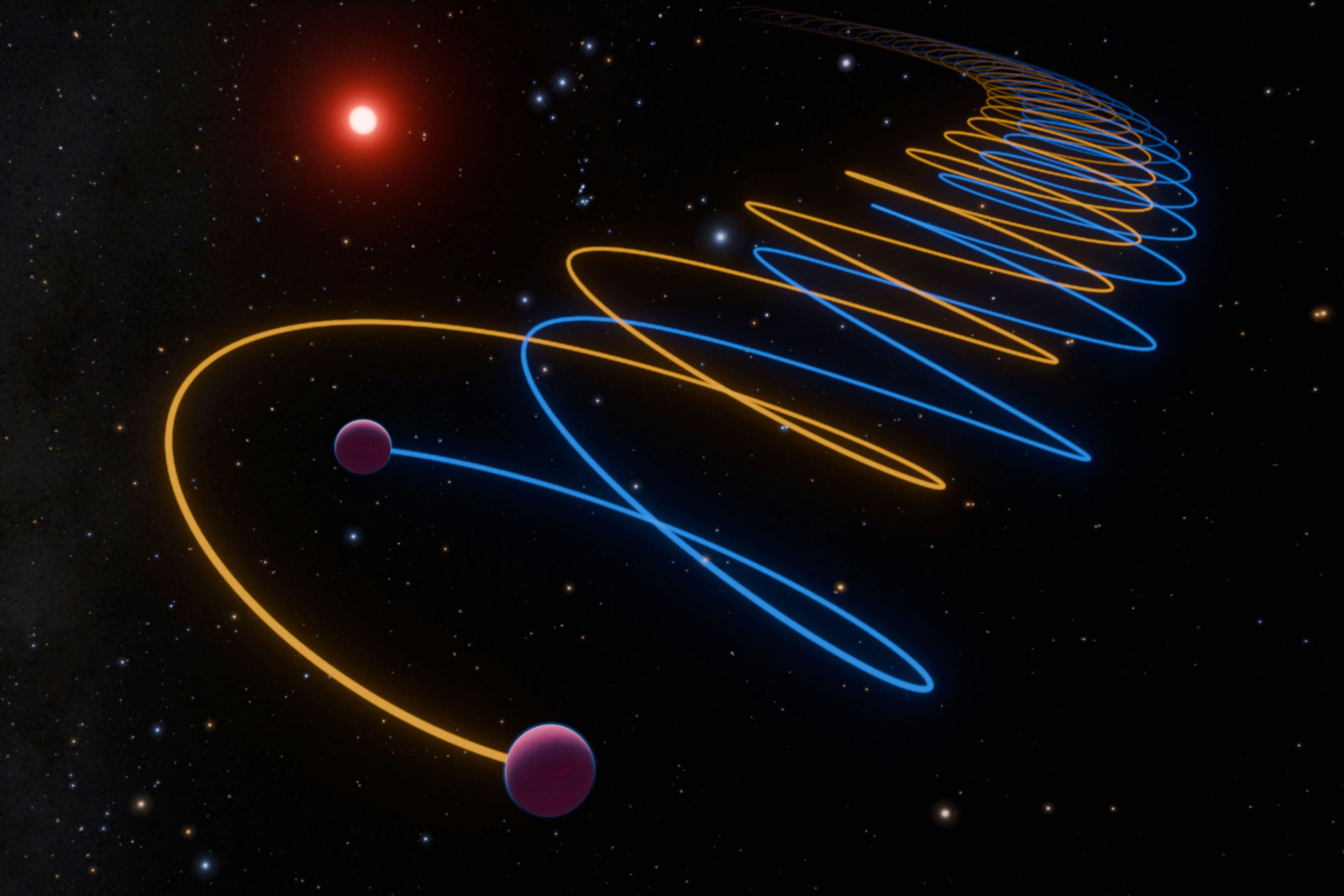A brown dwarf discovered 30 years ago is actually twins circling each other
NEW YORK (AP) — A celestial object discovered decades ago is actually twins orbiting each other,
NEW YORK (AP) — A celestial object discovered decades ago is actually twins orbiting each other, a new study confirms.
Scientists have puzzled over the object known as Gliese 229B, the first known brown dwarf discovered 30 years ago. Brown dwarfs are sometimes called failed stars because they're lighter than stars, but heavier than gas giant planets.
This object appeared too dim for its mass. Astronomers collected light and chemical clues using the Very Large Telescope in Chile and observed it's a duo circling close to each other.
“It resolves a glaring discrepancy,” said Kevin Luhman, an astronomer at Pennsylvania State University who was not involved with the research.
The twins orbit a small star about 18 light-years away. A light-year is 5.8 trillion miles.
Astronomers have spotted brown dwarf pairs before, but these two whip around at much closer range. They orbit each other every 12 days, less than the time it takes for the moon to circle the Earth.
“It shows you how weird the universe is, and how different solar systems are from our own,” said study co-author Rebecca Oppenheimer with the American Museum of Natural History.
The research was published Wednesday in the journal Nature.
The twins' discovery means there could be other lurking brown dwarfs with a hidden partner, said co-author Jerry Xuan of the California Institute of Technology.
___
The Associated Press Health and Science Department receives support from the Howard Hughes Medical Institute’s Science and Educational Media Group. The AP is solely responsible for all content.
Connect with the Southeast Missourian Newsroom:
For corrections to this story or other insights for the editor, click here. To submit a letter to the editor, click here. To learn about the Southeast Missourian’s AI Policy, click here.









